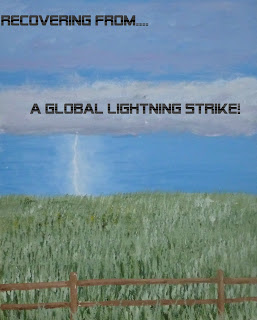Globalization has swept through areas like a lightning
bolt striking down anything that no longer competes internationally. Despite
its destructive powers, there are also opportunities for generating economies
anew. Research by Bailey, et. al. (2010)
explores how the mechanical sector of Prato Italy and the automotive sectors of
West Midlands United Kingdom in Europe were able to use “place leadership” to
understand the economic, social, institutional, and cultural aspects of places for
upgrading and renovating to create new international competitive products.
Places of production are locations where people’s
skills and corresponding firms develop a hub of economic activity. According to
Bellandi (2006), they have the following criteria:
1.) The presence of industry that is embedded in the
social fabric of people who have similar shared experiences within that industry.
2.) An industrial cluster that defines the economics
of a location.
3.) Local producers who share similarities in
knowledge, norms, conventions, and trust based beliefs. Cooperative actions abound
among business and institutional stakeholders.
In essence, these industries define the economic
activity of a place and are embedded into the very cultures of the people. As
globalization takes hold it changes the economic pressures on the economic hub and
can result in social and economic decline. There becomes a need to find new
ways of using old platforms to create new products and services for both
economically and socially viable.
In such regional hubs, leadership is about
developing the entire economic hub together as one system. In the context of
regional economic development leadership is the realization of, “the tendency of a community to collaborate
across sectors in a sustained, purposeful manner to enhance the economic
performance of its region” (Stough, 2001, p. 35). It is a process of getting people to work
together in a way that encourage social and economic processes that lead to regional
economic development.
There are many reasons why an area may experience a
level of decline. Technology changes and price shocks are two of the most
common factors. When a socio-economic system, with its value system becomes mature,
it can also become expensive. When a competitive price shock occurs, companies
begin to cost cut and if the value chain is not responsive, they may move their
operations overseas to maintain competitiveness.
As such, businesses move overseas the local area begins
to suffer the weight of a culture focused in a single direction and a hub of
businesses that cannot cost cut labor, political structures that are unyielding,
and “status quo” that stifles the need for change. The process of decline
continues until an economic collapse occurs and change is the only way to
improve.
To adjust the downward trajectory would mean to
create a more sustainable system using the old platform with new market
realities to regenerate the productive capacity of the area. For example, an
automotive and manufacturing region may opt to put in place innovative hubs
that mix with manufacturing to develop new products that are sold on the open
market.
The report suggests improving production capacities
by encouraging decision makers to do the following when decline is entrenched:
1.) Entering and securing high
value-added market segments: Encouraging businesses to move away from mass manufacturing
and pure price competition to niche markets and manufactured products that sell
for higher value.
2. Cross-sector fertilization: Fostering clusters
of knowledge that move beyond traditional markets and fertilize new markets for
future products, services and opportunities.
3.) Repositioning in the global value chain:
Reposition current clusters within the global supply vines to find new value
within the process.
The report provided some interesting
information on two case examples. To improve upon this model I would invite the consideration of three
additional concepts that would further the development of international markets
in both the short and long run. The researchers focused heavily on markets and how they are used to further change. Yet the very societal
structure, new investments, and core competency are needed to indicatively
develop sustainable markets for the future.
4.) Encourage international investments: Encourage investments into the
regional hub to develop new jobs, tax revenues, and products.
5.) Use core competencies to create innovative industries: Use basic
historical core competencies and build upon them to create new markets (i.e.
automotive to household products, planes, trucks, etc… ; or, fishing industry
to sea technology, sustainable fishing products, recreational boats, etc...
6.) Align institutional structure and culture for future growth:
Adjusting governmental structure to create leaner management, culture that is
progressive and rewards new ideas and performance, and foster the growth of
innovative clusters.
Bailey, et. al. (2010). Plan-renewing leadership:
trajectories of change for mature manufacturing regions in Europe. Policy Studies, 31 (4).
Bellandi, M., (2006). A perspective on clusters, localities and specific public goods. In:
C. Pitelis,R. Sugden, and J. Wilson, eds. Clusters and globalisation.
Cheltenham: Edward Elgar, 96, 113.
Stough, R., (2001). Endogenous growth theory and the role of
institutions in regional economic development. In : Z.J. Acs, H.L.F. de
Groot and P. Nijkamp, eds. The emergence of the knowledge economy: a regional
perspective. Berlin: Springer.

